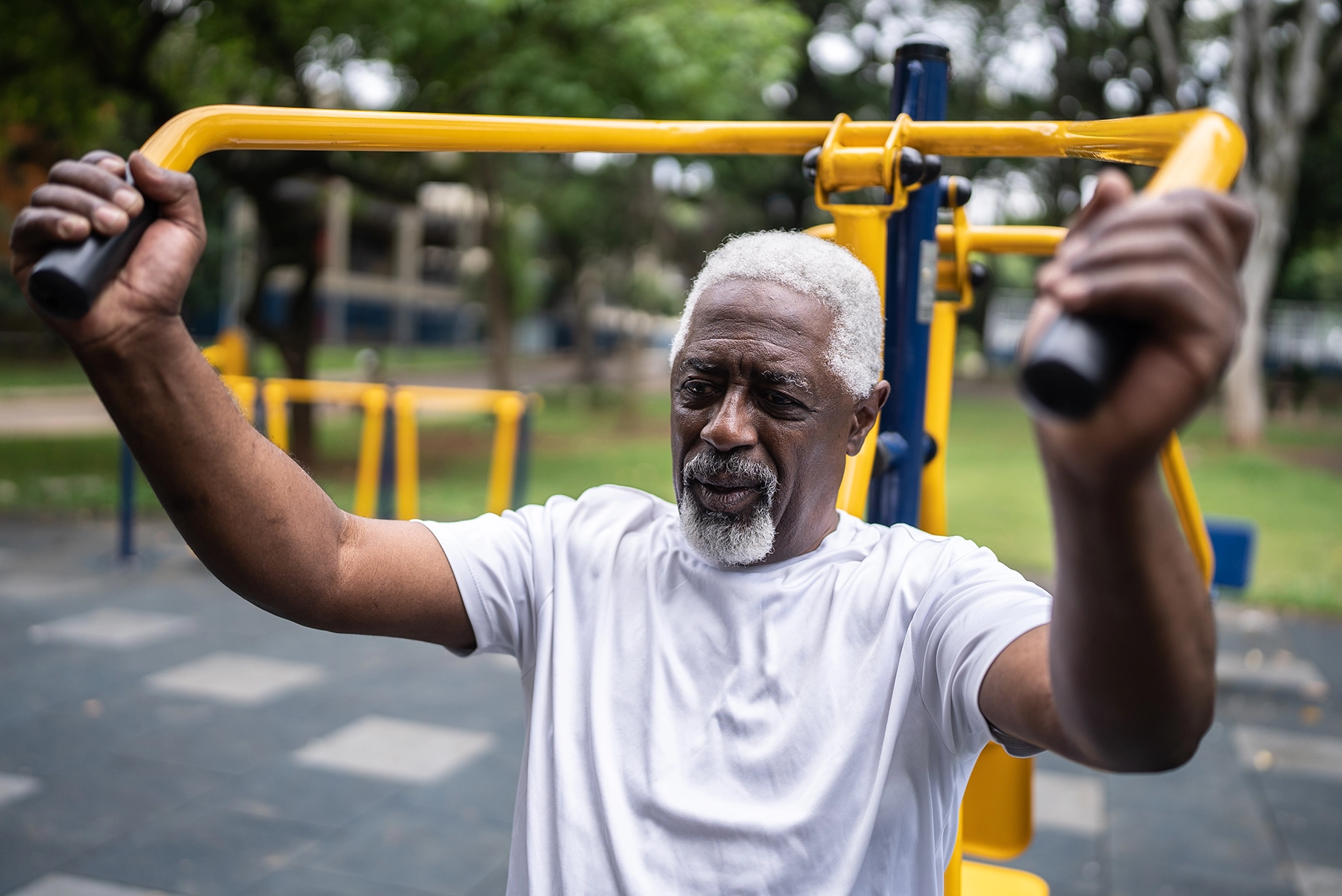How to Do Strength Train Safely

The importance of exercise to living a long and healthy life is hardly surprising news at this point. But what is fairly new is the government’s specific emphasis on strength, or resistance, training as part of their exercise guidelines. The Physical Activity Guidelines for Americans recommends 150 minutes of moderate-intensity activity each week, and recently added two days of muscle-strengthening activity.
Jenny Berezanskaya, D.O., a primary care sports medicine specialist with the University of Miami Sports Medicine Institute, wholeheartedly agrees with this addition to everybody’s exercise routine.
“For the general population, strength training is crucial for reducing fracture risk, slowing muscle atrophy associated with aging, and improving balance and reducing fall risk,” she says. “More and more, we are learning about the benefits of strength training, including reducing injury risk and even death due to any cause.”
According to the National Institute on Aging, research on strength training ultimately led to the inclusion of strength training in the physical activity guidelines. As we grow older, we naturally experience age-related muscle and strength loss, known as sarcopenia. Regular strength training can help combat that loss and prevent problems such as falls and lack of mobility.
How do I get started safely with strength training?
Dr. Berezanskaya offers her top tips:
Start small and easy.
If you’re just getting started, Dr. Berezanskaya says it’s best to use lower weights and fewer reps for each exercise to promote safety over gains. “Go slow and forget your ego,” she says. “If five pounds is all you can do, awesome. Increase when it gets too easy. It should feel like an 8 out of 10 difficulty in effort, with the last rep being the hardest to do.”
Don’t forget to warm up.
Dr. Berezanskaya says a little warm-up with walking or light jogging before a workout can make it more effective. She also recommends stretching to keep limber and prevent injury.
“Warm blood brings oxygen to muscles faster and makes tendons and ligaments more flexible,” she says. “Warm muscles are stronger muscles.”
Do harder exercises first.
As you get into a routine of more types of exercises, Dr. Berezanskaya says it’s best to focus on the more challenging exercises first and conclude your workout with the easier ones.
“More complex, technically demanding exercises should be done first to prevent muscle fatigue that results in poor form and then injury.”
Don’t overdo it.
Injury risk is a concern for many when they start strength training, which is why Dr. Berezanskaya recommends starting light and slow first. Her other advice here is to recognize that muscle soreness is normal as you start strength training, but pain is not. If you experience any pain while exercising, stop that exercise. If it persists over time, speak with your health care provider.
Work your way up.
Once you get comfortable, you can gradually start adding weight, sets, reps and different exercises.
“Muscle gets smart and lazy fast, so variety in your exercises is important for challenging your musculature,” says Dr. Berezanskaya. “This will also help in preventing injury from doing the same workout all the time.”
Personal trainers are helpful but not required.
If you can afford a personal trainer, they are great for showing you the ropes and helping you safely start an exercise routine. Dr. Berezanskaya says you can absolutely work out safely and effectively by sticking to the tenets outlined above: Starting slowly, focusing on form and working your way up to heavier weights and more exercises over time.
Wyatt Myers is a contributor to UHealth’s news service.
Resources:
1) How much physical activity do adults need?, CDC, 2022, https://www.cdc.gov/physicalactivity/basics/adults/index.htm
2) Interview with Jenny Berezanskaya, D.O., a primary care sports medicine specialist with the University of Miami Health System.
3) How can strength training build healthier bodies as we age?, National Institute on Aging, 2022, https://www.nia.nih.gov/news/how-can-strength-training-build-healthier-bodies-we-age
Tags: Dr. Jenny Berezanskaya, Sports Medicine Institute, strength training, work out smarter
